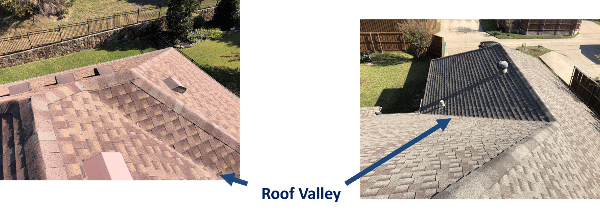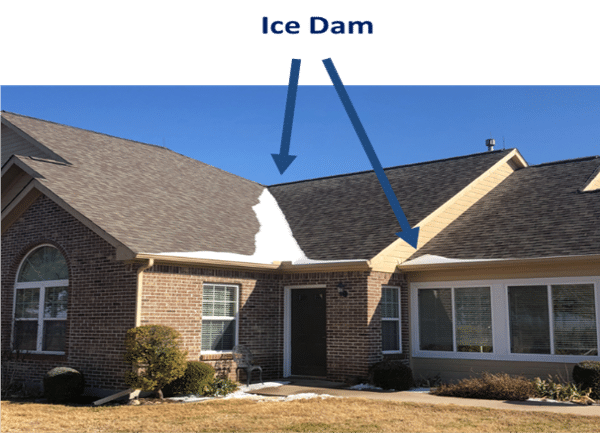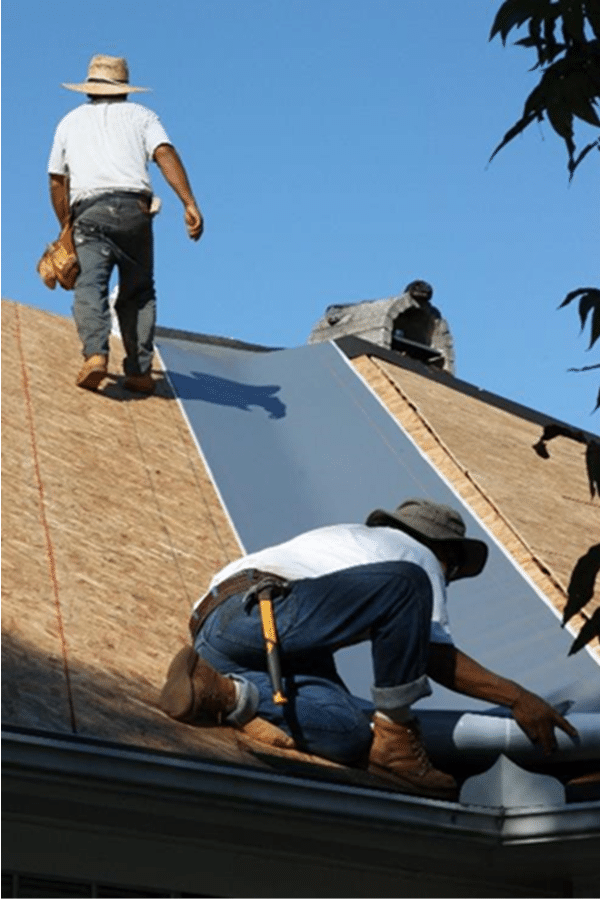Texas our Texas ~ within 72 hours we went from a winter weather advisory to a spring time weather advisory last week.
As fun as that extreme weather was, it also posed some issues for homes that experienced ice damming, and then, a fairly quick melting of ice on roof surface areas.
What is a valley?

A valley is formed by two intersecting slopes of a roof. Valleys collect water by design, and channels rainwater off the roof. Valley areas are often also shaded by higher roof peak and sloped areas. Any part of the roof that’s in the shade can be 10-20 degrees colder than an area that gets direct sunlight.
What is an ice dam?

An ice dam is a buildup of ice that forms and prevents melting ice (water) from draining off the roof. The water that backs up behind the dam can leak into a home and cause damage to walls, ceilings, insulation and other areas.
Snow, or ice tend to accumulate in your roof valleys (from top to bottom). Near the top of the valleys, where it’s warmer, frozen areas begin to melt and run down the valley. Hot air in your attic rises, so it’s always going to be warmer nearer the top of your valleys, and colder near the bottom of your valleys. All this is a perfect recipe for an ice dam.
Ice melting may freeze again when it reaches the colder lower part of your valleys. This lower part of the roof sometimes becomes packed with even more frozen buildup, which impedes the watershed design of the valley – sometimes to the point of redirecting water under the shingles, or breaching other waterproofing lines of defense applications on your home.
Why is Roofing Solutions Construction better?
Inherently, for over a decade, we have been installing an ice and water barrier in all valley areas. The ice and water barrier is a self-adhesive, waterproofing roof underlayment that acts as a shield against water and ice damage. It’s also made of modified bitumen (slip-resistant), which provides a watertight seal around the shingles and around penetrations.

We rarely see ice buildups – because our standard construction practices are better than most, and help bolster protection against the elements and all seasons.
